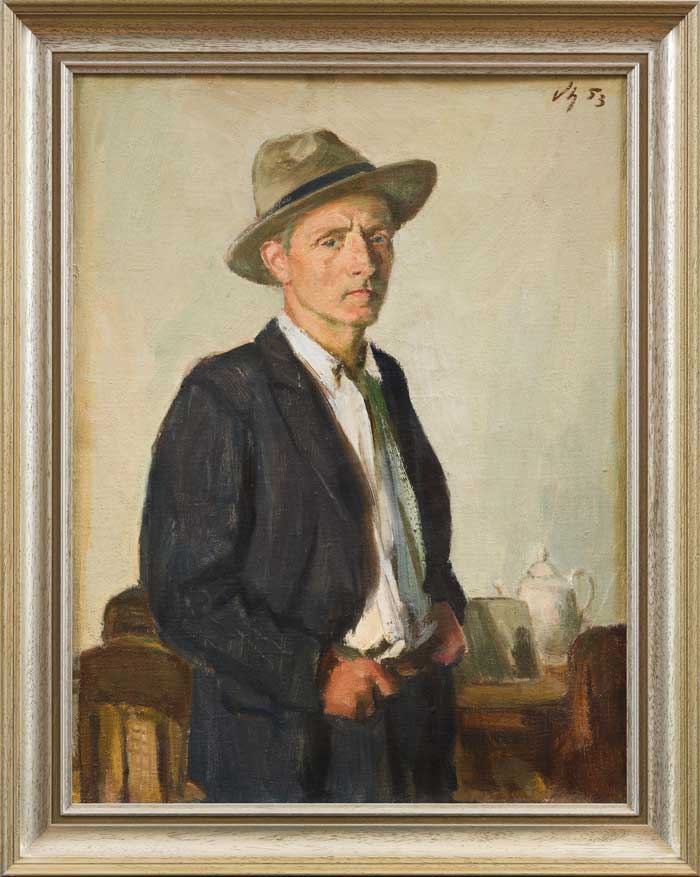The last time that Haus Gallery offered an incomparable combination of Võerahansu’s farm landscape and a self-portrait was nearly 20 years ago. That work, Assart Burners(1946), glowed with the same tone as the jacket in the work Self-portrait (1954), which went under the auction gavel next to it. At this year’s Spring Auction, these motifs, although in a different form, are once again side by side. The perspectives are longer and the tones cooler, although the sky in the distance is the same height and the look in the eye of the painting’s subject just as serious.
The composition and pose in Võerahansu’s Self-portrait (1953) forcefully brings Laikmaa’s legendary self-portrait from 1902 before the mind’s eye. While the figure of Võerahansu’s first mentor radiates in this comparison with force, intransigence and ambition, his own exudes simplicity, gentleness and dignified humility. The same type of calm is found in the reflection of Ira Sepp (1936), the portrait considered to be Võerahansu’s chefs-d'oeuvre.
Võerahansu’s West County Motive (1930s) is also calm, in which it can be felt that there was more than simple oxygen flowing in the artist’s blood, but also a light and crisp mixture of ploughed furrows and curtains of cloud. Black soil and blue sky have not been depicted here either idealistically or realistically, as the goal of the minimalist play of colours is, above all, the capturing and creation of internal emotion. It is precisely because of this emotion in the self-portrait that the author began to be referred to as the ‘most outstanding Estonian painter of landscapes’.
Haus Gallery’s Spring Auction will be taking place on Friday, 27 April at 19.30. The auction exhibition is already open. Auction works can also be viewed in the online catalogue.
.png)
